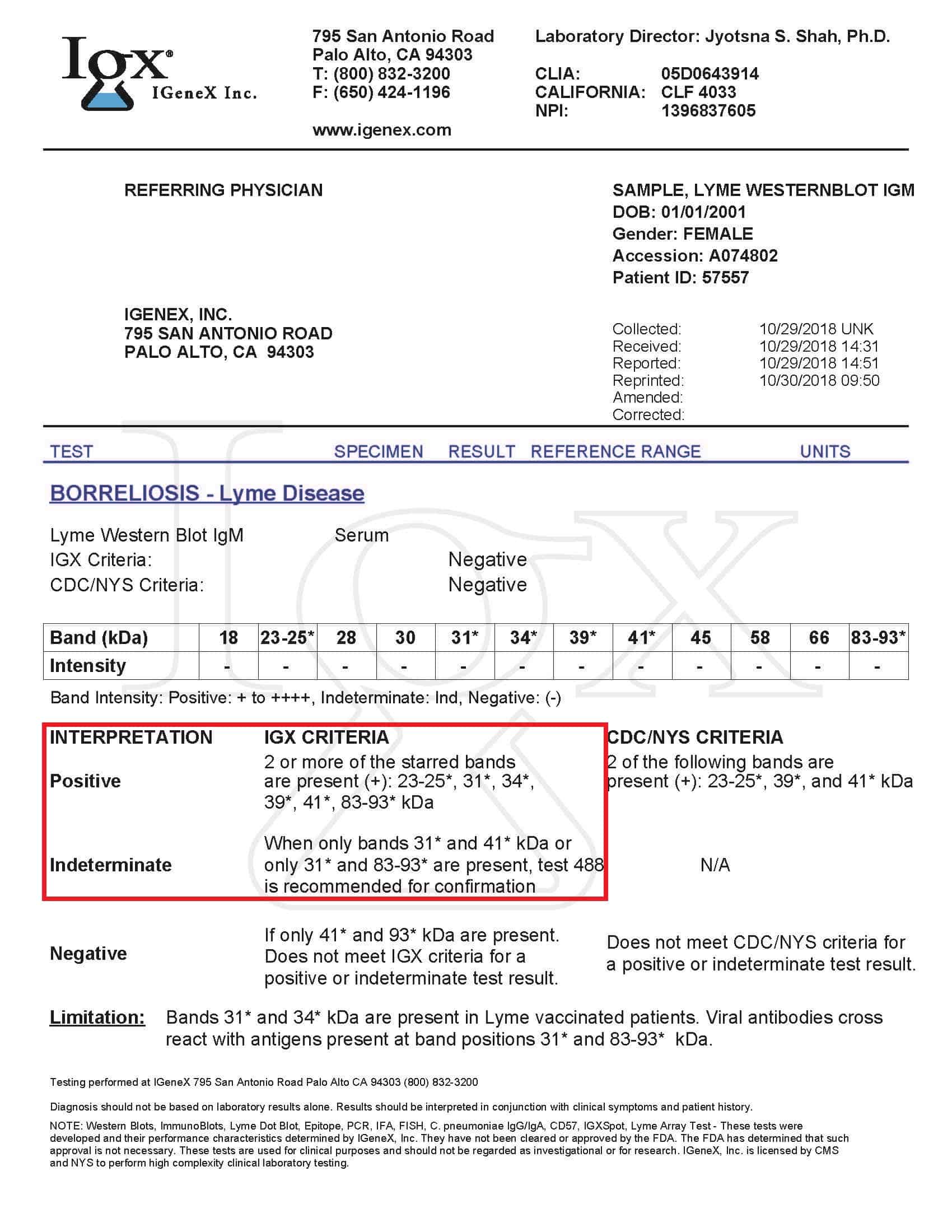- Infection/Co-Infection Lab Tests
- IGeneX Western Blot Lyme Test (IgM) | New York Only
IGeneX Western Blot Lyme Test (IgM) | New York Only
PopularBlood Test Types
Tests Included
IGeneX Western Blot Lyme Test (IgM) | New York
Lab Test Category
Note
This test can be purchased without a physician. After selecting "Order Test" select "Draw Locations For This Test" to find a draw location near you.
Articles
Related Lab Tests
IGeneX Western Blot Lyme Test (IgM) | New York Only
Sample Test Report

Frequently asked questions
Can IGeneX Western Blot Lyme Test (IgM) | New York Only be ordered without a doctor?
IGeneX Western Blot Lyme Test (IgM) | New York Only can be ordered without a doctor through the "More Details" link.
What does IGeneX Western Blot Lyme Test (IgM) | New York Only test for?
IGeneX Western Blot Lyme Test (IgM) | New York Only tests for: IGeneX Western Blot Lyme Test (IgM) | New York
{{#ratings}}
{{title}}
{{#ownerCreatedBlock}}
{{/ownerCreatedBlock}}
{{#category}}
{{#editor}}
{{/editor}}
{{#user}}
{{/user}}
{{/ratings}}
-
{{#owner}}
-
{{#url}}
{{#avatarSrc}}
{{name}} {{/url}} {{^url}} {{#avatar}} {{& avatar}} {{/avatar}} {{name}} {{/url}} - {{/owner}} {{#created}}
- {{created}} {{/created}}
Category: {{category.title}}
{{/category}}
{{#fields}}
{{#showLabel}}
{{/fields}}
{{label}}:
{{/showLabel}}
{{& text}}

















